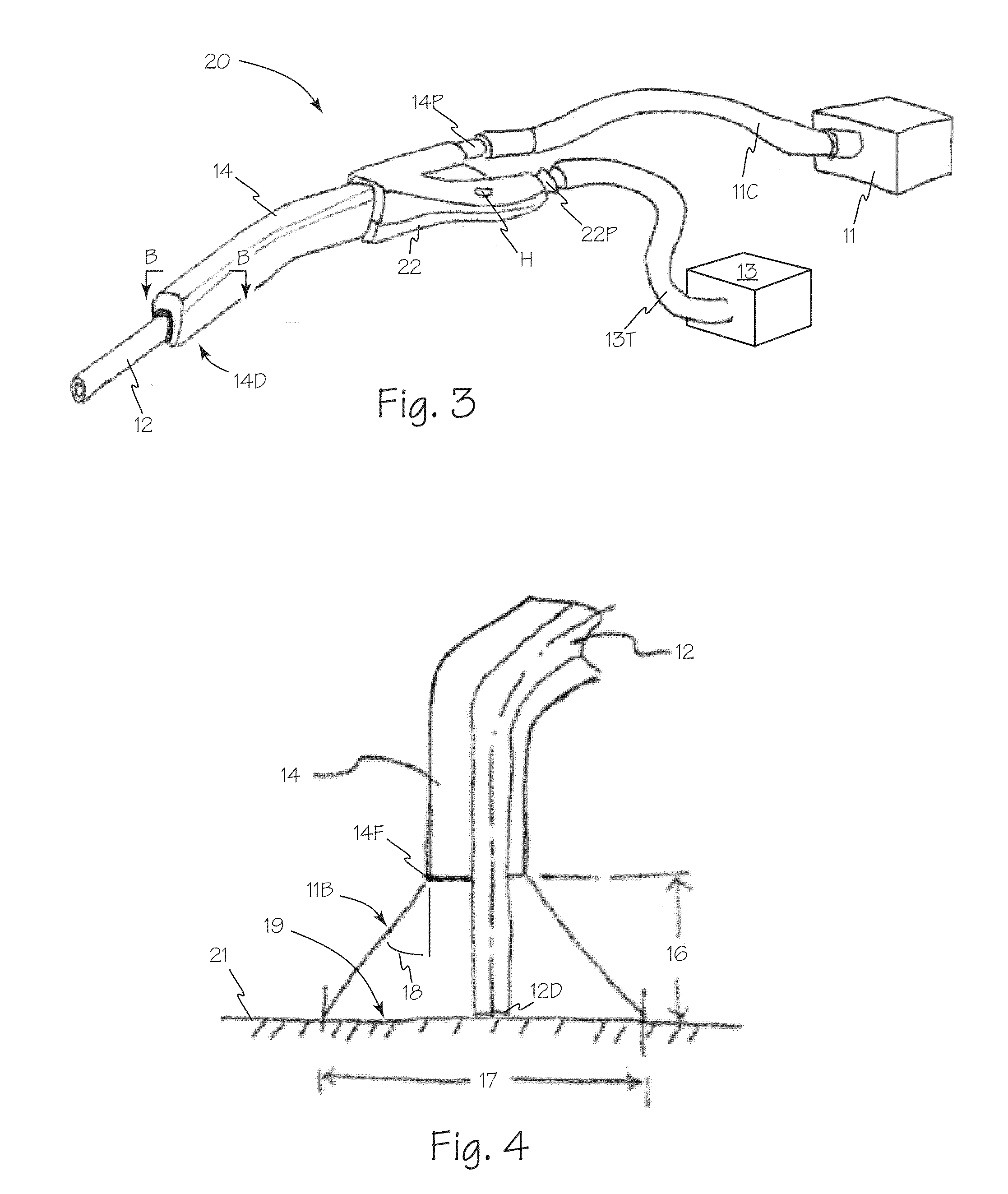Illuminated suction apparatus
a suction device and illumination technology, applied in the field of surgical illumination, can solve the problems of poor quality or poorly directed illumination, static and poorly directed light emanating from an operating microscope, and insufficient lighting from either source, so as to reduce reflected glare, improve illumination, and reduce the effect of scattering coefficien
- Summary
- Abstract
- Description
- Claims
- Application Information
AI Technical Summary
Benefits of technology
Problems solved by technology
Method used
Image
Examples
Embodiment Construction
[0031]Referring to FIGS. 1 and 2, illuminated suction apparatus 10 includes suction tube 12 made of any suitable material such as aluminum, stainless steel or any suitable acrylic or other polymer. Suction tube 12 encloses suction lumen 12L. Illumination waveguide 14 is secured over cladding layer 15 on central portion 12A of suction tube 12 leaving input or proximal portion 12P and distal portion 12D exposed. Illumination waveguide 14 may have a flat side such as side 14S or side 14T to optimize light mixing as light 11L travels from illuminator input 14P to output 14D.
[0032]Illumination waveguide 14 is made of an optical grade engineering thermoplastic such as cyclo olefin polymer which efficiently transmits light. Any other suitable material such as Cyclic Olefin Copolymer, Polycarbonate, Acrylic and or TPC may also be used. The angles and bends of the waveguide structure are engineered so light transmits through the waveguide via TIR. The side walls and other features have angle...
PUM
| Property | Measurement | Unit |
|---|---|---|
| refractive index | aaaaa | aaaaa |
| refractive index | aaaaa | aaaaa |
| refractive index | aaaaa | aaaaa |
Abstract
Description
Claims
Application Information
 Login to View More
Login to View More - R&D
- Intellectual Property
- Life Sciences
- Materials
- Tech Scout
- Unparalleled Data Quality
- Higher Quality Content
- 60% Fewer Hallucinations
Browse by: Latest US Patents, China's latest patents, Technical Efficacy Thesaurus, Application Domain, Technology Topic, Popular Technical Reports.
© 2025 PatSnap. All rights reserved.Legal|Privacy policy|Modern Slavery Act Transparency Statement|Sitemap|About US| Contact US: help@patsnap.com



